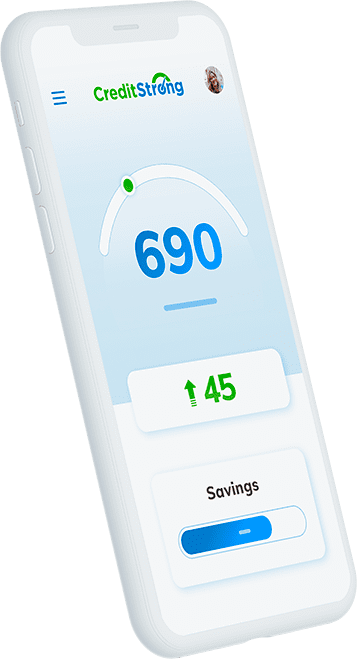How Long Does It Take to Rebuild Credit?

Build strong credit
while you save
For many people, low credit scores are the result of unfortunate circumstances. Your car breaks down the same week your bills are due. Or, a medical procedure leads to lost work and you have to pick and choose which payments to make on time and which have to wait.
“The time it takes to rebuild your credit can depend on what hurt your credit in the first place, how much time has passed, and whether you’re adding positive info to your credit reports.”
Unfortunately, there’s no instant cure for poor credit. Bringing your accounts current and paying off a collection account won’t remove those negative marks from your credit history, and they can continue to hurt your credit scores for years.
The time it takes to rebuild your credit can depend on what hurt your credit in the first place, how much time has passed, and whether you’re adding positive info to your credit reports.
It can take longer to recover from more serious negative marks. There are many types of negative items, or derogatory marks, that can lower your credit scores. These include:
- Late payments
- Collections accounts
- Charged-off accounts
- Repossessions
- Foreclosures
- Bankruptcies
The impact of a negative mark can depend on what happened and on your overall credit profile.
For example, a 90-day late payment or foreclosure is worse for your credit than a 30-day late payment. A late payment also might not hurt your credit as much if you have a robust and long credit history compared to someone who’s new to credit.
Interestingly, if you have an excellent credit history and miss one payment then your credit scores might drop by more points than if your credit history is filled with derogatory marks.
It may seem counterintuitive, but this is because the other derogatory marks have already lowered your credit scores. The late payment can still hurt your scores, but it’s one in a series of negative marks rather than change in your standard behavior.
FICO has an infographic that shows the impact of the same derogatory mark on people with different credit profiles. It also explains why people don’t experience the same score drops.
The impact of negative marks decreases over time
There’s no specific timeline for how long a derogatory mark impacts your credit scores. But it’s fair to say the impact decreases over time.
If you previously had excellent credit, you may find it’ll take years to get back to that point. While, if you only had okay credit, it won’t take as long to get back to that point — although it could still take years to reach the excellent credit range.
The recovery time can also depend on the event. It may take a few months to recover from a hard inquiry, a few months (or years) to recover from a 30-day late payment, and much longer to recover from a 90-day late payment or other major negative mark (such as a foreclosure).
One thing is certain — negative marks will eventually fall off your credit reports and no longer impact your scores.
Hard inquiries fall off after two years (and only impact FICO scores for the first 12 months).
- Chapter 7 bankruptcies fall off 10 years.
- All other negative marks fall off after seven years. If a single account has a series of negative marks (such as multiple late payments and then a collections account) and you never brought the account current, the seven-year timeline starts with the date of the first late payment.
New, positive activity could help
So far, we’ve discussed how it can take less time to rebuild your credit after a minor negative mark and that the impact of negative marks decrease over time. But you don’t have to sit on the sidelines and wait it out — you can look for ways to improve your credit history.
Opening a new account and making on-time payments could add positive information to your credit reports. Having lots of on-time payments and accounts with clean histories could help lessen the impact of future negative marks and decrease your recovery time.
4 steps you can take this week
If you’re ready to take action, here are a few ideas you could implement right away.
1. Open new accounts
Several types of accounts are created specifically for people who are building or rebuilding their credit. A credit-builder loan, such as Credit Strong, could be a great starting point. If you’re also interested in opening a revolving credit account, look for a secured credit card.
2. Set up automatic payments
Make sure you don’t accidentally miss any future payments by signing up for automatic bill payments through your bank. However, if you think you might not have enough money in your account to afford all your bills, it might be best to skip this step and the possibility of getting charged a fee for overdrafting your account.
If you fall behind on a bill, try to pay the bill in full and bring the account current before you’re 30 days late. While being late by even a day can lead to late-payment fees, you have to be 30-plus days late before the creditor can report the late payment to the credit bureaus.
3. Review your credit reports for inaccuracies
Get a free copy of all three credit reports (from AnnualCreditReport.com or online sites that offer free access) and closely review it for errors. Everything from an account that’s not yours to a past-due amount that’s incorrect could be an error, and you can dispute these errors and ask the credit bureaus to either validate or remove the information. You may see your credit scores increase if negative items get removed after you file disputes.
4. Pay down revolving account balances
Your utilization rate — the portion of your credit limits on revolving accounts (e.g., credit cards) that you’re currently using — is an important scoring factor. Even if you have negative marks in your credit history, lowering your utilization could quickly raise your credit scores.
CreditStrong helps improve your credit and can positively impact the factors that determine 90% of your FICO score.
